There are two common variegated cultivars of Tradescantia fluminensis which look very similar – ‘Variegata’ and ‘Yellow Hill’. Here are some tips for telling them apart.
Stripe pattern
The main distinguishing feature between these plants is the pattern on the leaves. Both plants have a random layout of pale stripes which can be wide or narrow, and can cover anything from 0% to 100% of the surface of each leaf.
The stripes on ‘Variegata’ have neat sharp edges, and the stripes themselves are a smooth and uniform colour. So the overall impression is of a bold, high-contrast pattern with clear individual stripes.
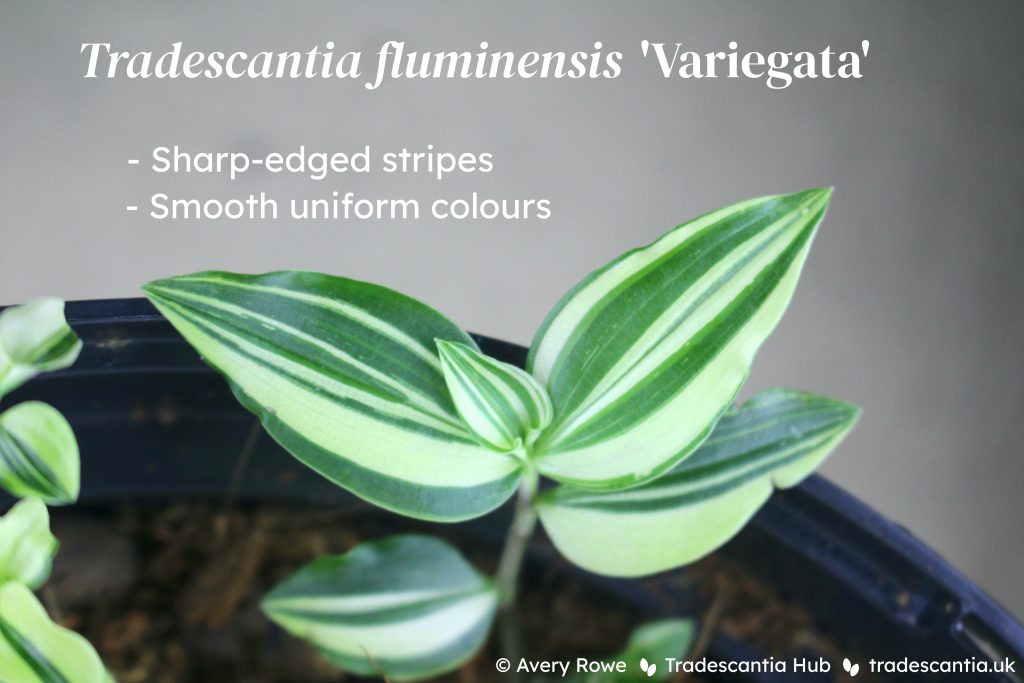
On ‘Yellow Hill’, the stripes have more fuzzy blurred edges, and the stripes themselves are mottled. The overall impression is of a more fuzzy, subtle pattern with less defined stripes.
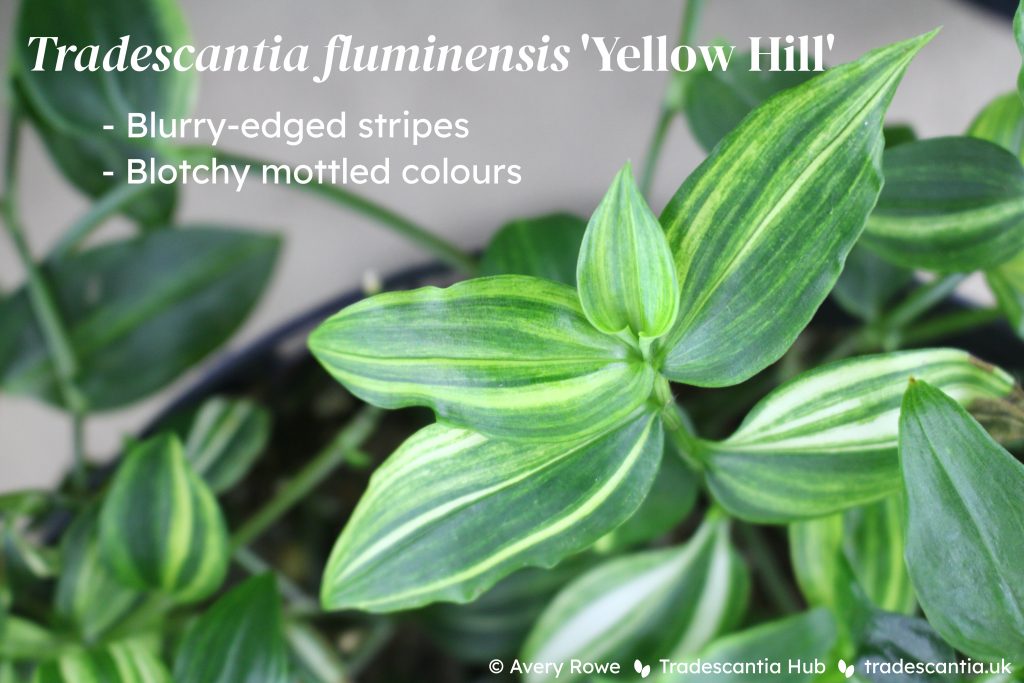
Pink pigments
Like most tradescantias, both these cultivars can occasionally develop pink pigments when in bright light.
‘Variegata’ develops these pigments fairly easily, and will often form a pink blush on the stems and leaves (most visible from the underside).
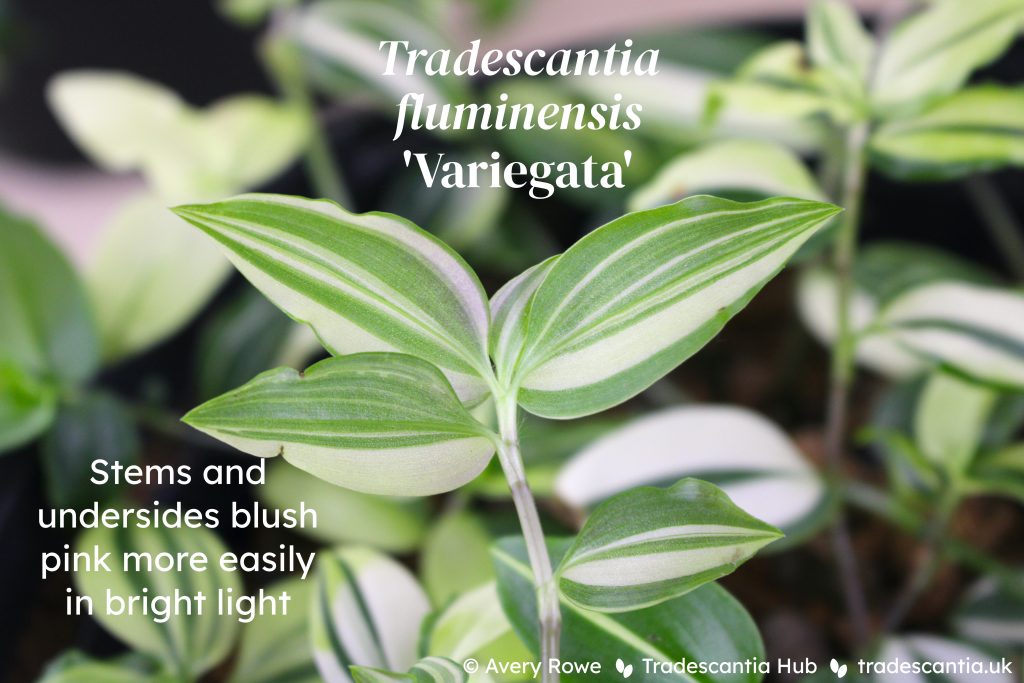
‘Yellow Hill’ is less prone to turning pink. It will generally only happen in the most intense light stress, so most of the time the stems and leaf undersides stay very green.
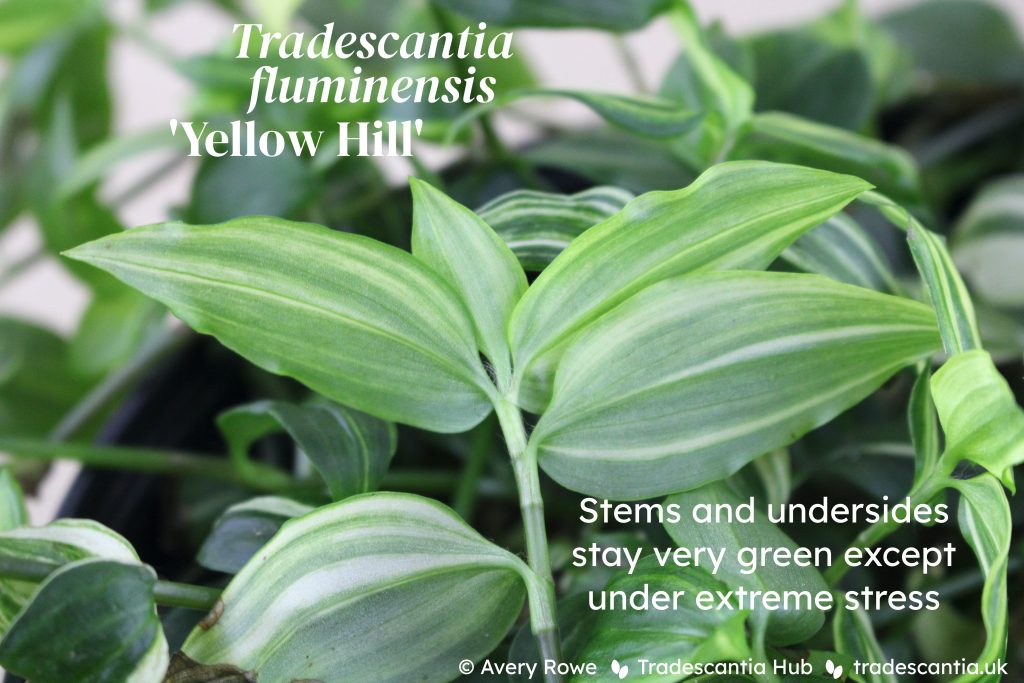
Growth habit
It’s not so obvious at first glance, but the two cultivars do grow differently.
‘Variegata’ is much slower-growing overall, whereas ‘Yellow Hill’ is fast and vigorous. Two plants of the same size will develop very differently over the same amount of time.
Where they came from
‘Variegata’ is the oldest cultivar. If your plant came from a very longstanding nursery, or was a cutting from an old plant, it’s more likely to be this cultivar.
‘Yellow Hill’ is more modern, and has become much more common. It’s the only one of the two that is mass-produced for wholesale currently. So if your plant came from a garden centre, a hardware shop, or a general plant shop which don’t grow their own stock, it’s most likely to be this cultivar.
Red herring: leaf colour
Here’s a characteristic which can’t reliably be used to distinguish the two plants. Some people describe ‘Yellow Hill’ as having yellow stripes, and ‘Variegata’ as having white or cream stripes. But the colours of both can vary so much, it’s not a reliable distinction.
The newest growth on both plants tends to have a more yellow tint, and as the leaves age the stripes generally fade to become more cream or white. Both plants will also regularly produce stems with no stripes, where the leaves are pure green or pure white/cream. Those stems can be the most difficult to identify, because they don’t show the characteristic stripe patterns.

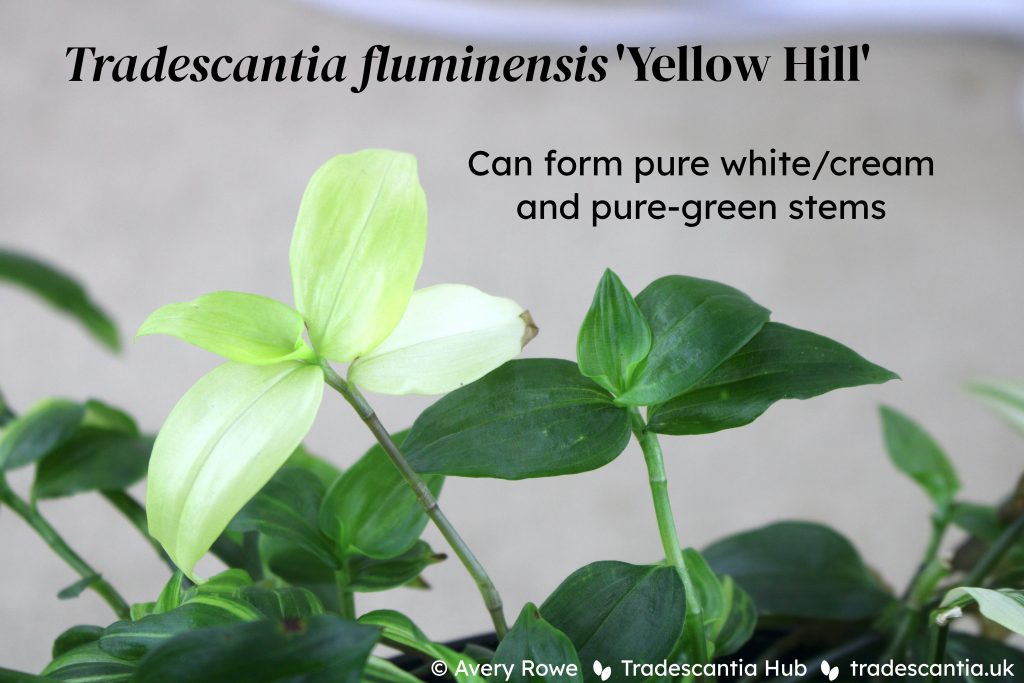
Found this article helpful?
If you want more great resources like this, you can help me keep making them with a regular payment on Patreon.

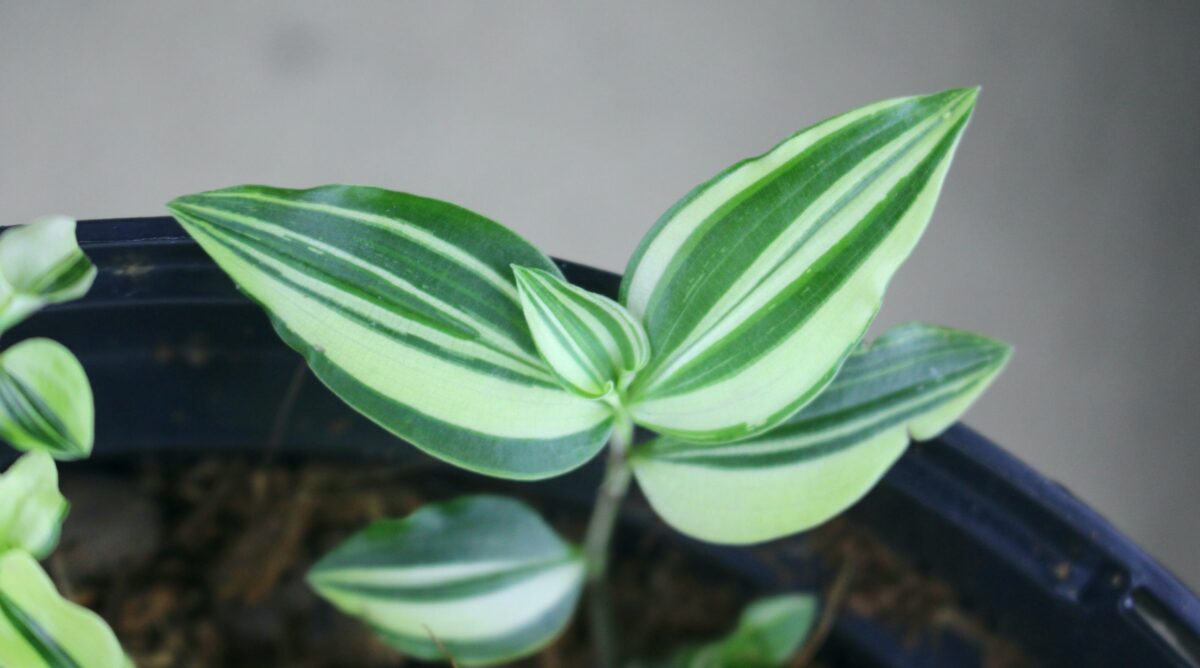
2 replies on “What’s the difference between ‘Variegata’ and ‘Yellow Hill’?”
Howdy. These are definitely different in the US but to me the yellowish-green to yellow, soft, blotched and blurred look of ‘Yellow Hill’ matches my US concept of ‘Aurea’ (‘Aureovariegata’), which is exceedingly variable for the amount of chimera from 5-50% and with all yellow shoots too.
Hi!
The earliest use I’ve found for the name ‘Aureovariegata’ is a 2020 blog post, so it’s definitely not valid and doesn’t take precedence – it’s just someone’s misguided attempt to “correct” the existing name for ‘Yellow Hill’ into Latin. (Unless you have an earlier source?)
I’ve found uses of ‘Aurea’, ‘Aureo-vittata’, ‘Aureo-picta’, and ‘Aureo-striata’ (and various others) to refer to variegated plants throughout the 20th and late 19th centuries. But because of how similar these cultivars are, it’s impossible to confirm which cultivar is being described unless there are photos – even drawings usually aren’t precise enough to be sure.
The earliest photo I’ve found is in Graf (1955) and it definitely shows the one here labelled as ‘Variegata’. The earliest photo of the one labelled ‘Yellow Hill’ here is from a 1992 RHS book, and it’s also labelled as ‘Variegata’ 🤦 So there’s really nothing to go on except for what’s in common use today, and that’s overwhelmingly ‘Yellow Hill’ for the mottled type (as the name used by many international mass-producers).
It’s frustrating that historical use has been so confused and impossible to rely on. Unfortunately I’m going to have to just make some judgement calls to officially accept modern names that are now widely-used, even when it’s very likely that earlier names may have originally referred to the same plant.